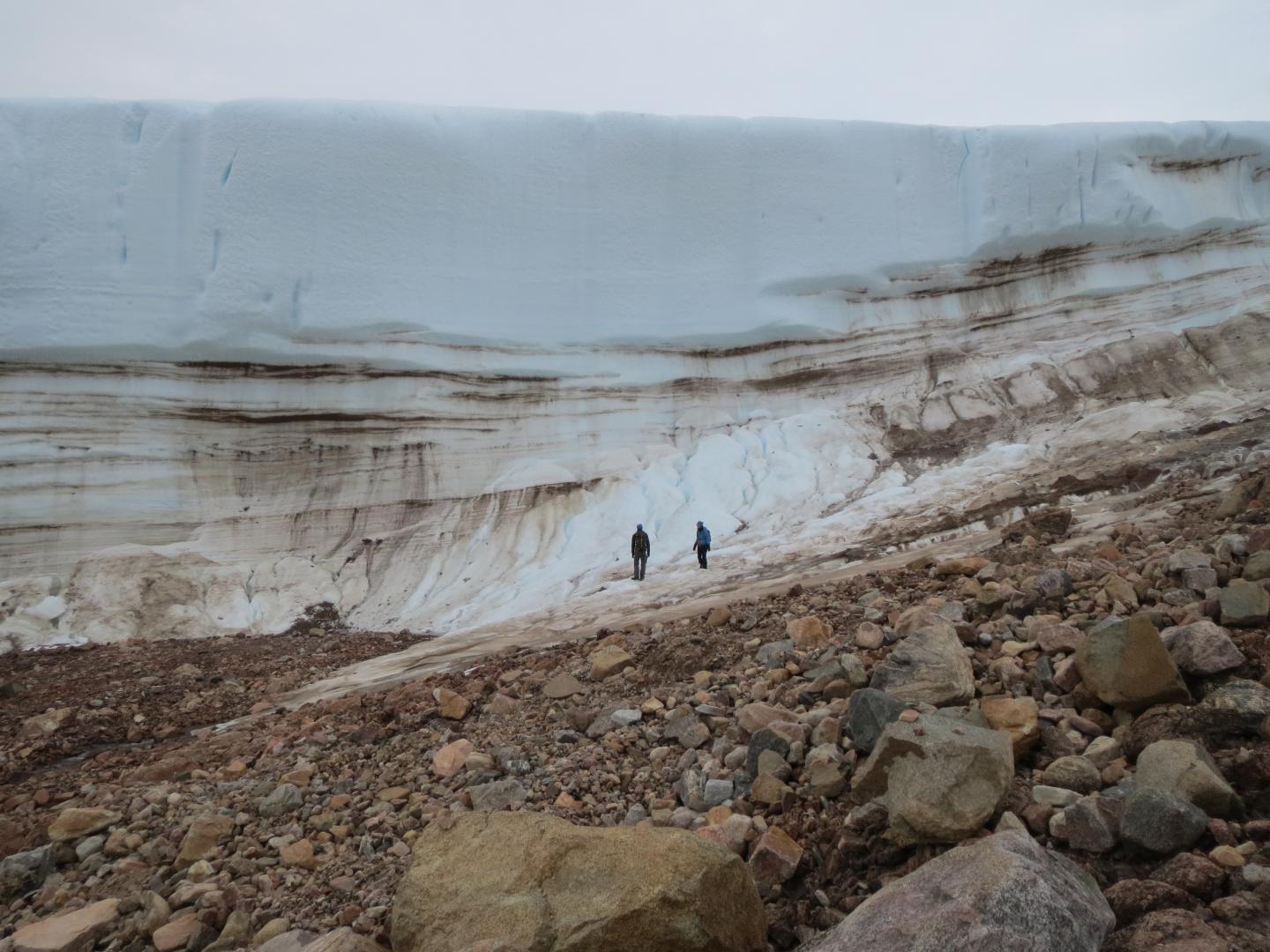Small bugs point to surprising finding: ancient Greenland was warmer than once thought
The presence of phantom midges thousands of years ago made researchers revise past estimates — information that will prove useful as the world warms.

Science, even with its grand discoveries and shifting paradigms, can sometimes be dull work. It involves leaning over bits of tundra, meticulously separating one plant from the others, counting the number of mites on a square grid of plastic, and digging through ancient mud, scrutinizing it for scraps of tiny bugs that were once abuzz in prehistoric patches of water.
But occasionally, something happens.
It happened to Jamie McFarlin, a Ph.D. student at Northwestern University, as she was sifting through sediment taken from a lake in northwest Greenland. Amid the mud, she spotted something that seemed out of place — the mandible of a phantom midge, or what looked like the mandible of a phantom midge, a lake-dwelling insect that, as far as the researchers knew, had never been spotted in the country.
“I think my first reaction at the time was to take a picture and email it to [Yarrow Axford, associate professor at Northwestern] for confirmation. I definitely had not expected them and I wasn’t really looking for them, but the mandibles are so distinctive they would’ve been hard to miss,” McFarlin wrote in an email.
This small abnormality would go on to help McFarlin, Yarrow and their team to reconstruct Greenland’s climate of hundreds of thousands of years ago when trees grew on Canada’s southern Baffin Island, Scandinavia was ice free and the sea levels were 15 to 30 feet higher than today.
In a paper recently published in the journal Proceedings of the National Academy of Sciences, McFarlin, Axford and other researchers detailed how these findings suggest that the island was even warmer than once thought. Beyond revising past estimates, this information could help scientists make better projections of how our world — specifically the Greenland Ice Sheet, which contains roughly 8 percent of all ice on Earth — will respond to a warmer future.
Scientists have used thick cores of ice pulled from remote glaciers, sediment extracted from deep in the ocean and mud from northern lakes to reconstruct past climates. Scrutinizing these specimens, they extract volcanic ash, pockets of air and water that can hint at atmospheric changes and natural disasters.
Bugs too, those tiny annoyances today, can be important clues. In a well-known but little-used method, Axford has used midges to reconstruct past temperature changes throughout the Arctic.
For the study, she and a team of researchers from Northwestern and Dartmouth University focused on sediment cores from a lake in northwest Greenland affectionately named Wax Lips Lake for its unusual shape. In this location, the team collected sediments from the early Holocene — 8,000 to 11,000 years ago — and the Last Interglacial — 116,000 to 130,000 years ago, a period where there are few reconstructions of past temperatures.
“We think very high-latitude, cold places like this might be ideal in some ways for using insects as temperature indicators. Over thousands of years of geologic history, in these rocky Arctic landscapes there’s less competing influence on insects from things like changing vegetation or developing soil cover — things that might compete with temperature to influence insect ecology at lusher sites at lower latitudes,” Axford wrote in an email.
It’s in these cores that McFarlin made her discovery. Because phantom midges are only found in a similar abundance 1,000 miles south of the lake, in Labrador, Canada, the authors estimate that July air temperatures in the area during the Last Interglacial were 5.5 to 8.5 degrees Celsius warmer than today.
The authors also estimated July air temperatures during the early Holocene were four to seven degrees Celsius warmer than modern-day Greenland.
“Broadly speaking, modern Phantom midges prefer warm air and water temperature, and are generally associated with boreal climate conditions, so we think their past abundance at our site tells us temperatures were warmer,” McFarlin wrote.
The warming estimated by the study during the Last Interglacial is consistent with findings from a 2013 study that used an ice core to reconstruct air temperatures during the Last Interglacial. It estimated that 126,000 years ago temperatures peaked at 8 degrees Celsius above modern average temperatures — a finding that was heavily scrutinized, as it deviated from prior estimates of 4 to 5 degrees Celsius warming.
But these two separate methods of dating, ice cores and midges, lends more credibility to these findings.
“I’m sure there will be some skepticism [of the new study], as there should be about any one record. As a community, our picture of past climates really comes from compiling information from a wide range of sources. In fact, that’s part of what our paper does — compiles what’s known from a range of indicators, and points out where there may be agreement,” Axford wrote.
Which is McFarlin’s next focus.
Using fossilized leaf waxes pulled from the same core, she hopes to gain new insight into other climatic factors in the region during these times of warming: snow and rain.